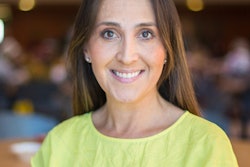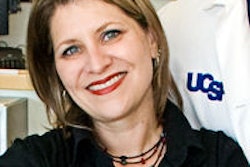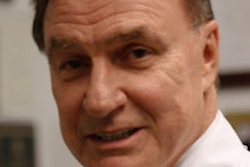
DrBicuspid.com is pleased to present the next installment of Leaders in Dentistry, a series of interviews with researchers, practitioners, and opinion leaders who are influencing the practice of dentistry.
We spoke with Maritza Alford, national sales director for Henry Schein Dental Surgical Solutions, about the challenges and opportunities dentistry faces in 2015 and beyond.
DrBicuspid.com: Let's talk about 2014. There have been acquisitions, and it's been an active year for Henry Schein. Can you discuss some of the highlights?
 Maritza Alford, national sales director at Henry Schein Dental Surgical Solutions.
Maritza Alford, national sales director at Henry Schein Dental Surgical Solutions.Ms. Alford: The acquisition and investment piece is very exciting for Henry Schein. We have looked at, how do we continue to grow and be relevant in the industry?
One of the ways for the company to continue to grow and develop is by investing in categories where we aren't the market leader, or we have not been as strong a player in [these] specific categories. The dental implants space, of course, is a very strong category, not only for Henry Schein but also for many companies, because it is going to be the standard of care moving into the future.
With all the advances in digital technology to support the surgeon, we're also [working to] support the general dentist who wants to understand how they can provide a better treatment plan for their patient. They are working in tandem with their surgeons but also maybe looking at, how do I position a dental implant in my practice better? We are looking at the category of general dentistry, so we have made some investments, and that is something Henry Schein will continue to do in the future.
For 2015, what is Henry Schein looking at moving forward?
We are going to continue to invest in technology and programs, companies, and products that can drive education around surgery. Dental implants, grafting, biologics, and everything that is important to build a portfolio for the patient to move forward and look at a long-term solution that is best for their oral care.
By this I mean that we're not just looking at the financial part of the investment -- and that happens a lot of times with patients -- but we can help educate the patient: as in, OK, yes, we understand this is going to be a costly investment, but let's take you through the whole process and why we are recommending this.
Henry Schein will continue to develop ways to help the office-based practitioner, whether it is the oral surgeon, the periodontist, or the general dentist, to support an experience and process they can deliver to their patients effectively and easily.
As you've touched on, we've seen survey after survey where patients cite cost as the main factor, or impediment, to treatment. So that is a discussion you help the practitioner have with the patient?
Absolutely. Henry Schein, as a business -- we are trained to communicate. We are dedicated to supporting a small office-based business, whether it's one practice, to hundreds of practices that a corporation or a private entity would own. We understand the challenges of running the business, and we want to leverage other services and other ways to really capture the attention of the patient.
“We have to develop other ways of enhancing the patient experience.”
Today, with social media and the Internet, patients are looking up procedures the minute they leave your office. They are going to go on the Web, they are going to post something on Facebook, and they are going to say to their friends, "Hey, I was just told I need a dental implant," or "I was just told that I have periodontal pockets; what does that mean?"
So we have to, as businesses, be very vigilant and understand what consumer trends are, not just what is happening with our direct customers. We have to really guide our customers to, OK, this is what is happening in the market, here are some of the business services and other ways we can coach and help you become a stronger partner to your patients at a business level.
How does it work to build a partnership between the specialist and the general dentist?
We hosted many corporate forums here at [the American Academy of Periodontology (AAP) 2014 meeting], one of which focused on developing a partnership using digital dentistry as a surgeon with your referring partner, whether a general dentist or a prosthodontist, for example.
One of the things we heard from our speaker was that, as a periodontist, I could either really frown on my general dentist partners placing an implant, or I could take a different approach and help mentor them and maybe look at some simple cases they could take on. Having a clear discussion with my general dentist partner then leads to the ground rules of, if it's this type of patient, you should be sending them to me; however, here are parameters I think we would both be comfortable with you managing through your practice.
And it's long overdue that that conversation takes place between the specialist and their general dentist partners. There are a lot of general dentists who are looking at the changes in insurance reimbursement, PPOs, and they are worried; they are making less revenue on their traditional procedures, and they have to look at expanding their portfolio of services to the patient.
When they reach out to a specialist partner and the specialist partner is completely opposed and has no desire to help them, the general dentist will find a partner who will [help them]. The specialist who is embracing the "new normal" in the specialist-general dentist relationship is the specialist who, in the future, is going to win and win big, because they are going to find a way to develop a team approach to patient care.
Generally, what do you see happening in dentistry over the next several years?
The insurance industry is going to continue to change. We already see the writing on the wall, and as industry, as clinicians, we have to develop other ways of enhancing the patient experience. We are going to have to do more with less, and so we are going to have to work efficiently and look at where you can maximize an opportunity to provide the best standard of care for the patient, but also reduce your overhead costs -- maybe through technology, and through other ways that can help you create a stable budget.
Technology is going to continue to change and evolve. To the clinicians who are not investing in technology and are waiting, it's not going to slow down. It's the analogy: The belt on the treadmill is at full speed -- are you going to jump on?
The great thing for Henry Schein and for all of our field managers is that we are well-equipped to take the customer through where they are in the process. We don't expect people to jump on the treadmill at full speed. Let's start jogging and figure out the most conservative first-step approach, so you can build a long-term goal of looking at technology to support your clinical and business needs.



















